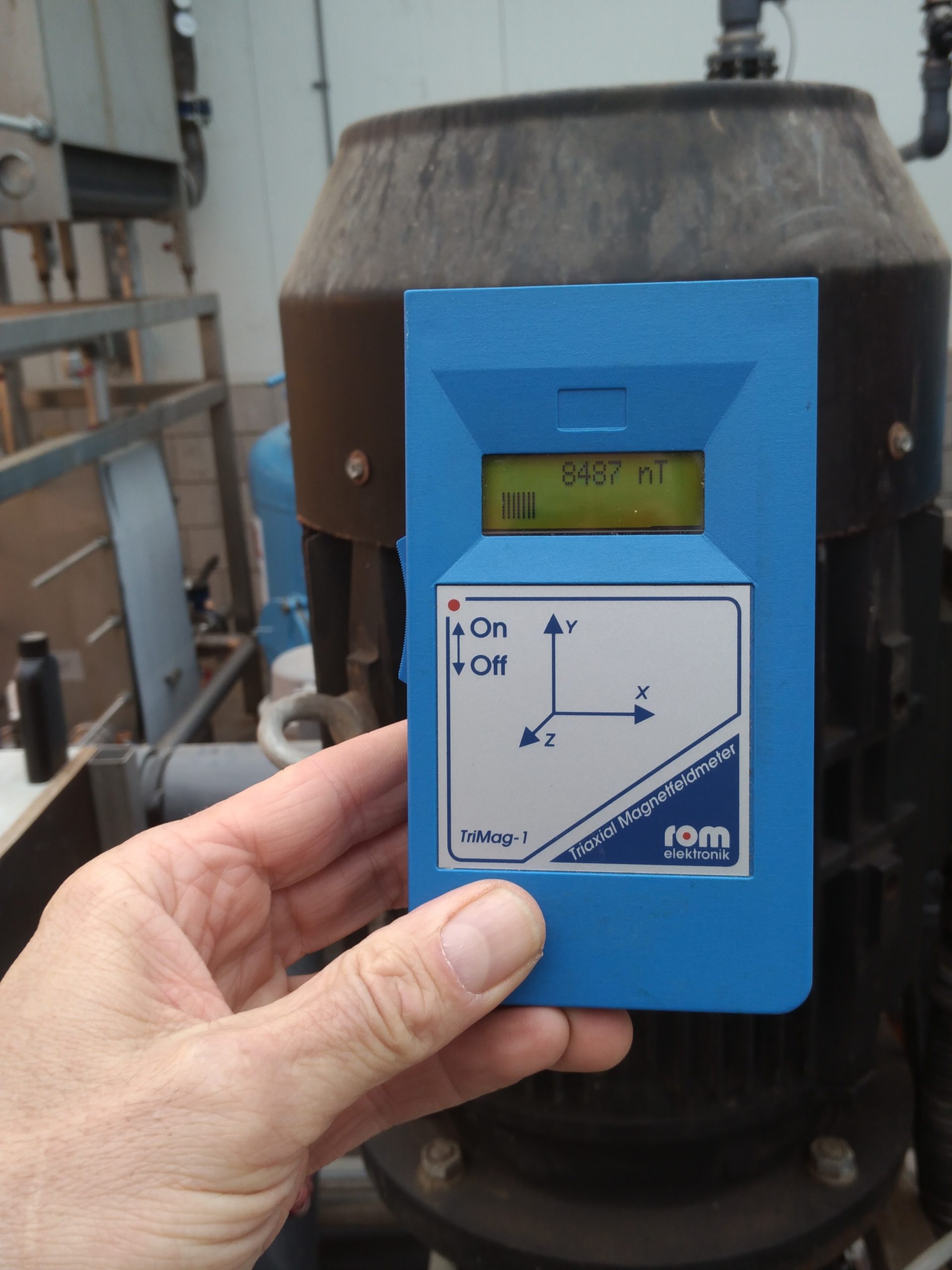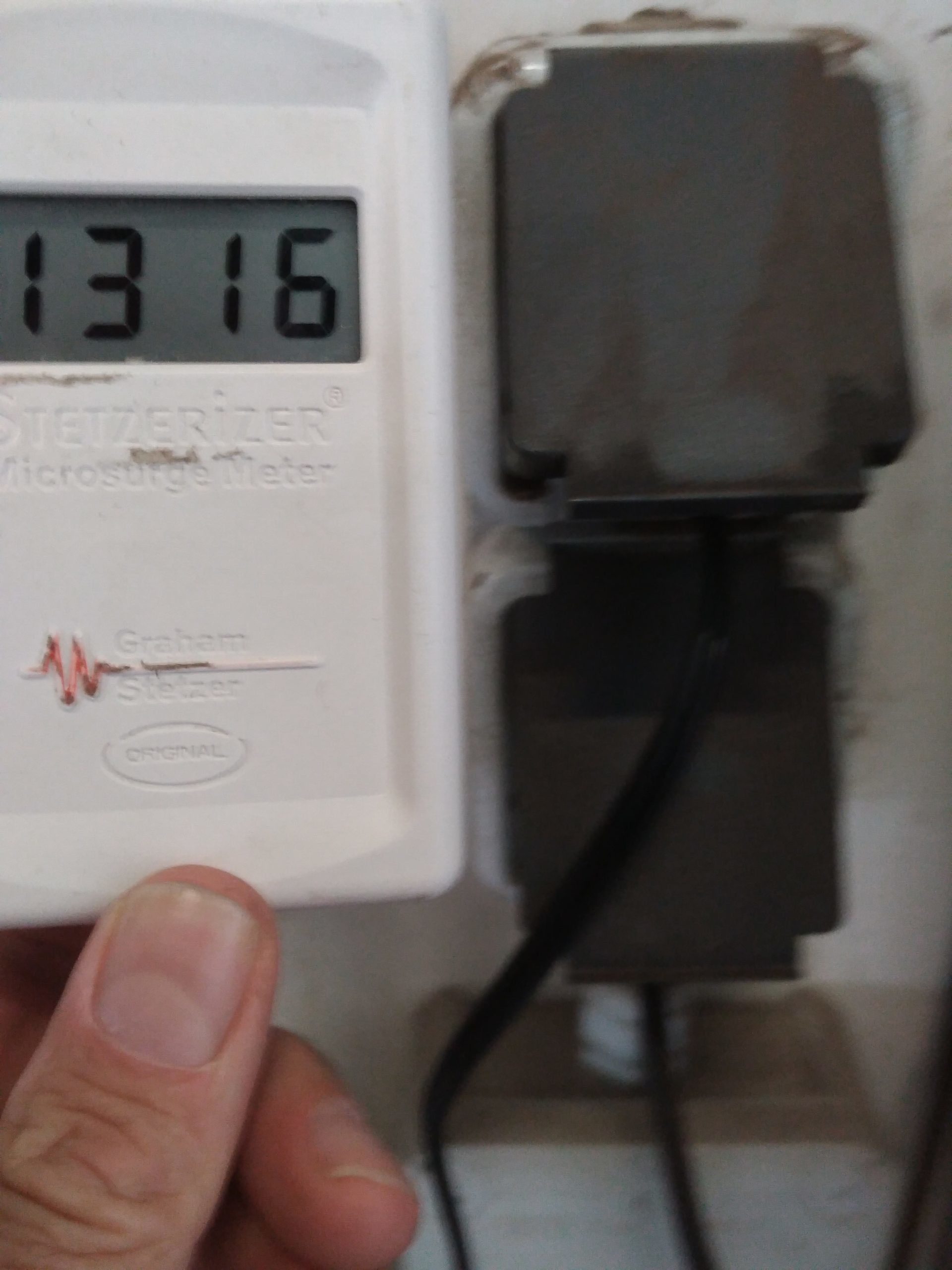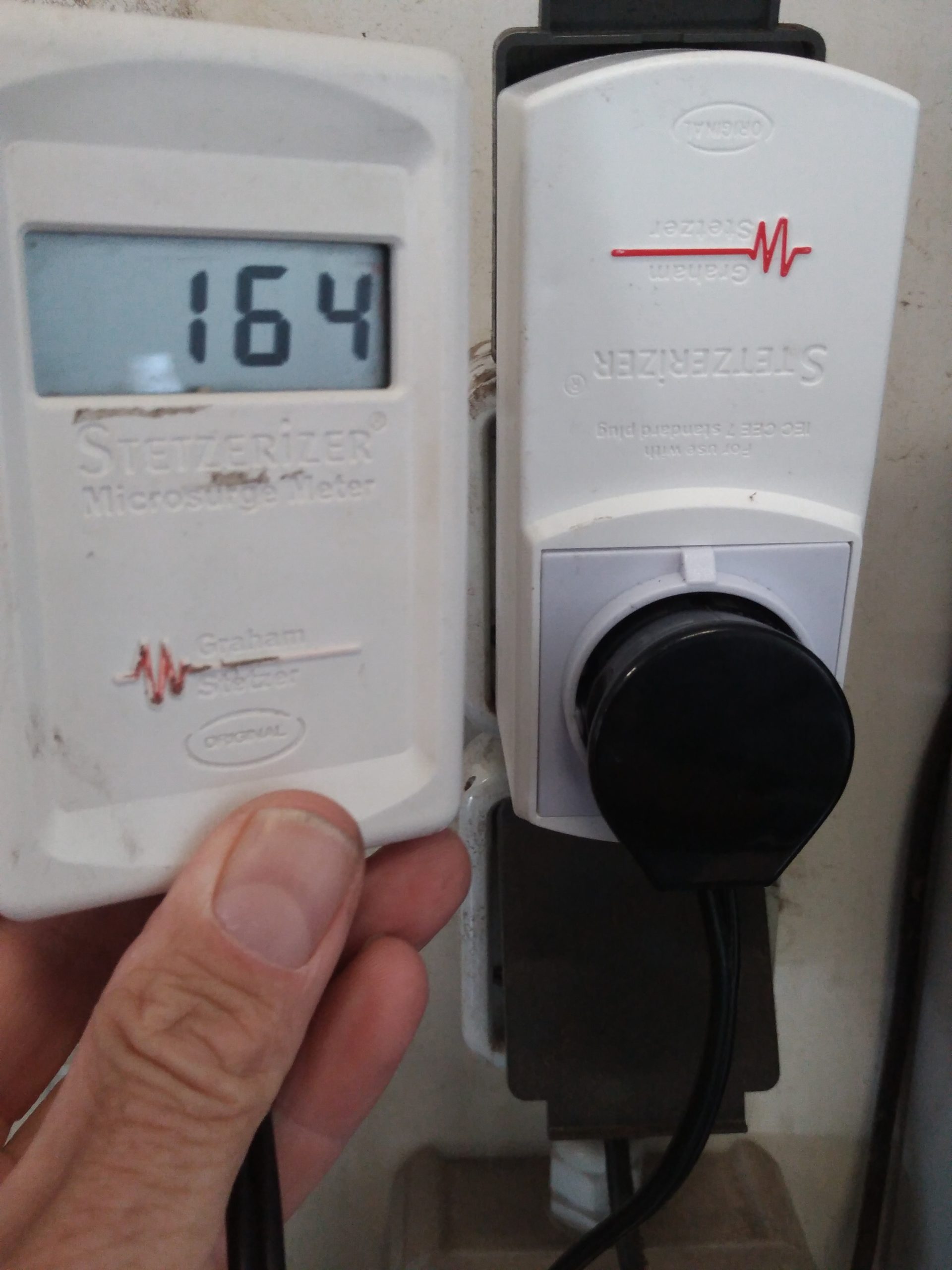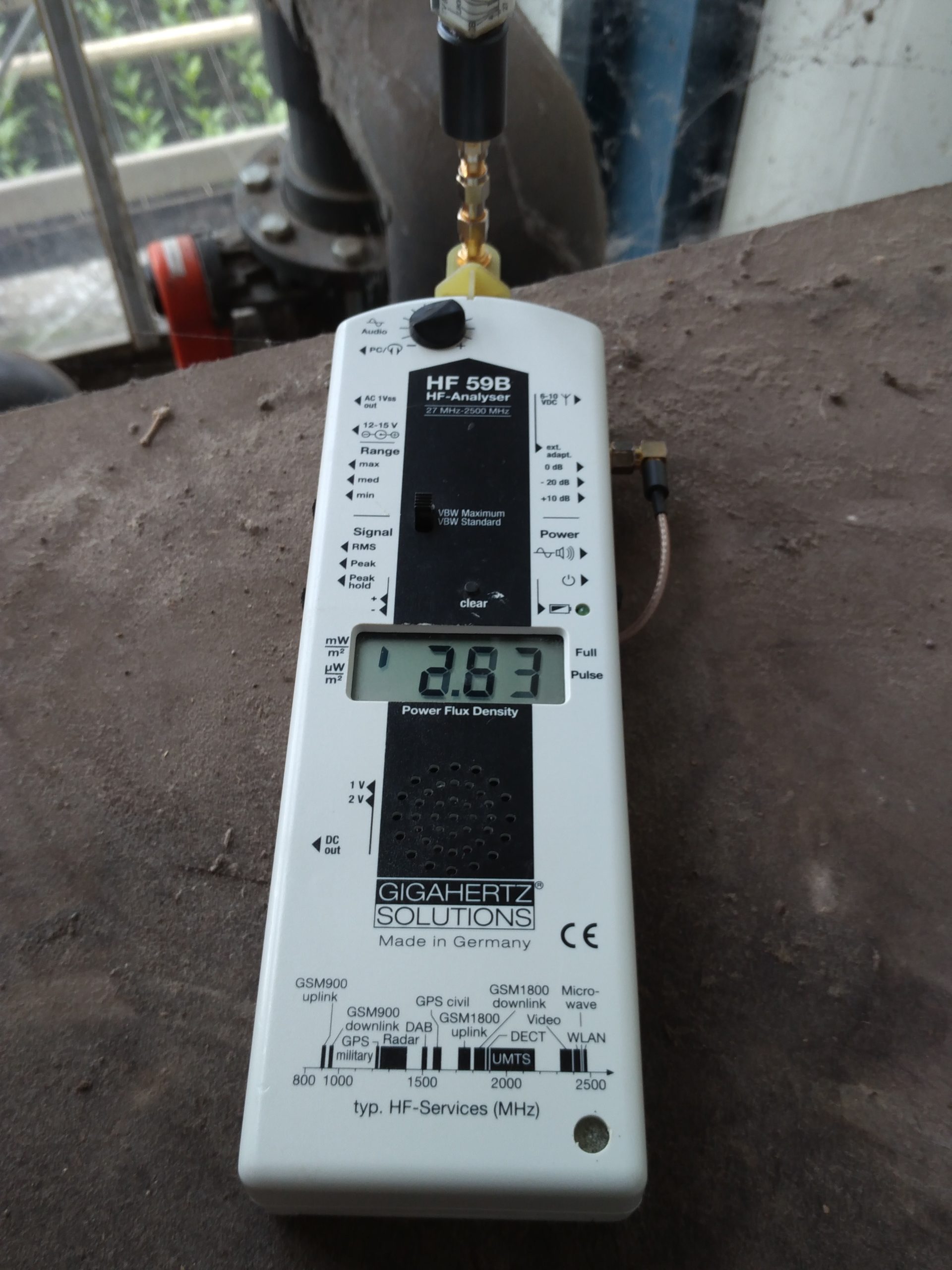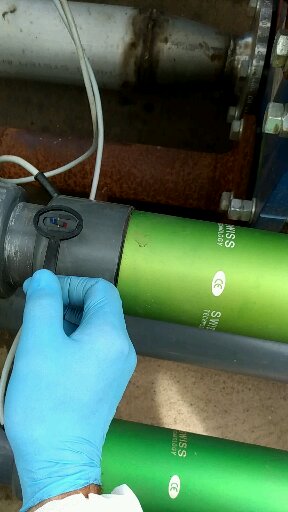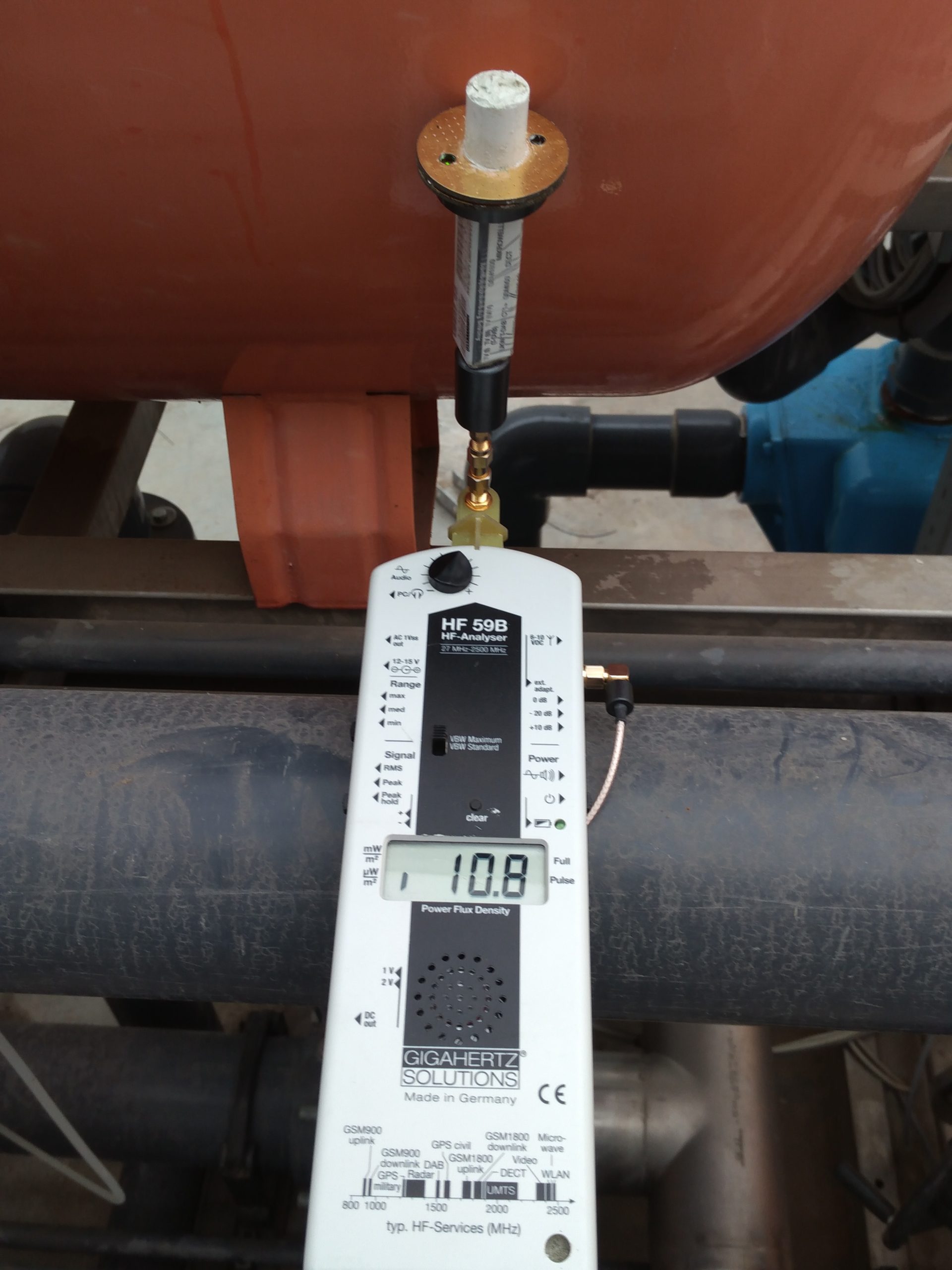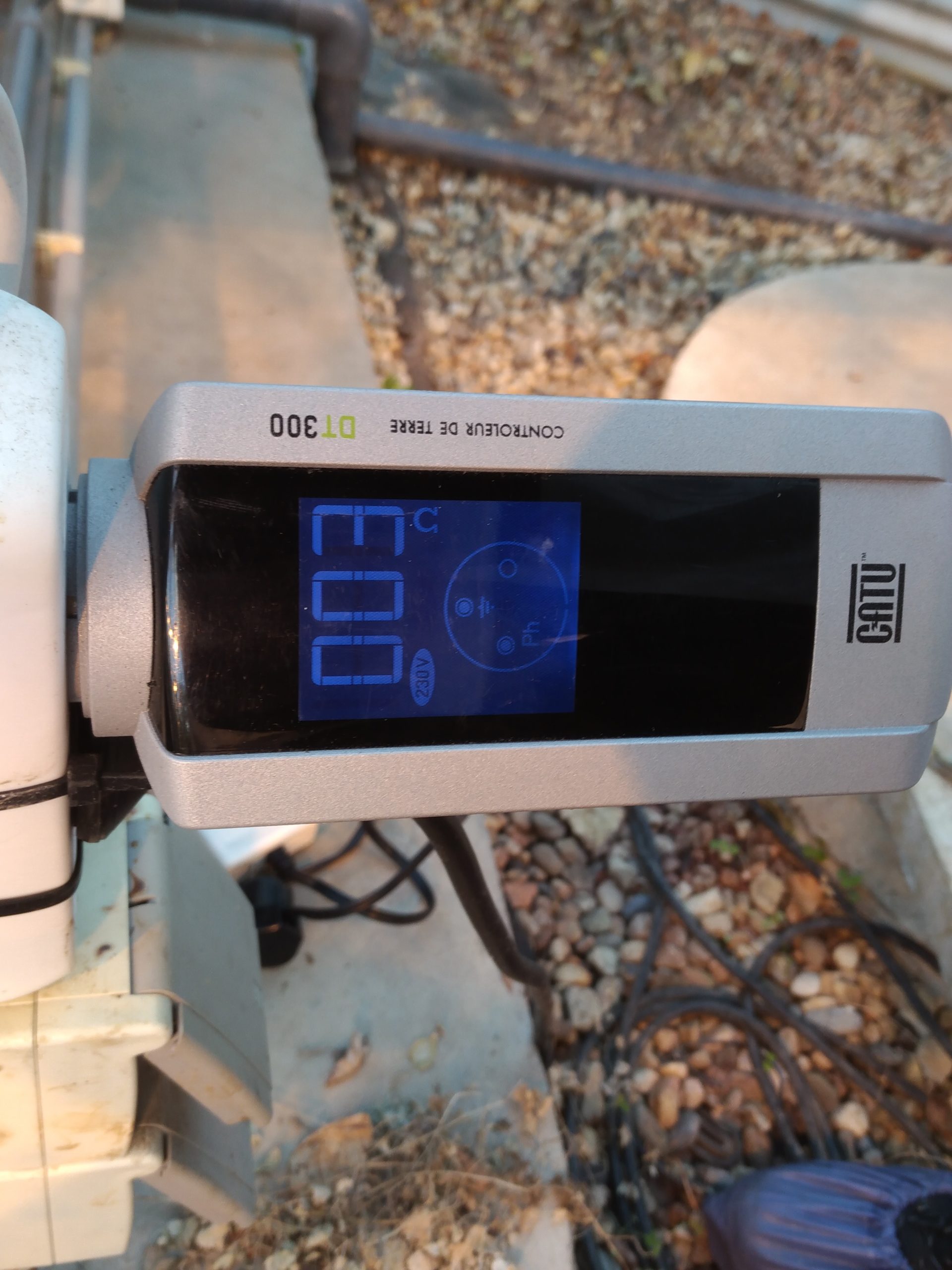Electricity has become an integral part of our lives. We are surrounded by electrical equipment everywhere and all the time. This equipment often causes electromagnetic fields, which can affect humans, animals, plants and the environment. An influence that can have visible positive or negative effects. High-voltage cables, transformers or transformer houses and transmission masts are well-known examples of sources of electromagnetic radiation.
Author: Harry Stijger
Without the blessings of electricity, our society would look completely different. However, there is also another side of electricity: the unnatural electromagnetic fields (EMF). “The awareness that this has an effect on people, animals, plants and also on the rest of our environment is slowly beginning to penetrate,” says Raymond Lescrauwaet, electrical engineer and EMF measurement specialist [see passport photo]. “Among other things, there is increasing evidence of the phenomenon of ‘electrohypersensitivity (EHS),’ in which people experience symptoms from the constant presence of electrical equipment.”
Through his electrical engineering training, he has studied EMR. “There is most likely a relationship between electromagnetic fields, which can affect humans, animals and plants, and the possible damage to crops.” Since 2002, Lescrauwaet has been partly active as an indoor environment specialist, researching the effects of radiation in the world around us and providing advice on how to counteract it as much as possible. Specifically for horticulture, he makes measurements of radiation sources near crops and pouring water. “There are also good things to do with electromagnetic fields. For example, the Aqua4D water system makes use of this. A water treatment with this system improves the molecular water structure, which may have already been damaged by all that ambient radiation.”
Difference between theory and practice
The EMF measurement specialist has good contacts with scientists and professors. For them, he is a practical source of information from the working environment to establish the possible relationship with biological effects c.q. health complaints. Lescrauwaet is also a member of the sounding board group of the Scientific Platform EMF (= Electro Magnetic Fields) Netherlands. This independent platform consists of more than 35 (emeritus) professors and other academics/experts, who urge the government to start a national research program into the effects of 5G EMF frequencies in humans and in the ecosystem as a whole.
Lescrauwaet “With electromagnetic fields, a strange discrepancy is happening on humans, animals and plants. The standard used by the government indicates that these fields can only cause harm when there is thermal warming from EMF (mostly 1 degree Celsius). According to current standards, no harm would be possible without thermal warming. Several scientists say this is sheer nonsense.”
In practice, he has measured more than a thousand locations, in which a significant proportion (about 70%) already had health complaints which, after measurable reduction of the EMF, became considerably less or even disappeared completely. Of course, it is difficult to prove that it was due to electromagnetic radiation and could also have other causes. “The current regulations are based only on thermal effect and are therefore really not adequate, because there are more risks associated with electromagnetic radiation than currently thought.” This is also endorsed by em. prof. dr. ir. Michiel Haas (formerly TU Delft), with whom Raymond Lescrauwaet has worked independently since 2005, in the informative book “Electrostress & Health” and on the related website www.elektrostress-gezondheid.nl
Grounding resistance of electrical installations
To prevent damage from electromagnetic fields, it is important to know where they are located and what can be done about them. The first thing the electrical engineer mentions is the grounding resistance of electrical installations. The electrical installation in a greenhouse or room creates a voltage difference of e.g. 230 and 380/400 volts. This is the potential difference with respect to the earth. The higher the voltage, the higher the potential difference is and the higher the urge to equalize it with the earth. Lescrauwaet: “So if a greenhouse is not properly grounded, electrical alternating fields remain in the greenhouse. That’s an unnatural situation that people and plants don’t like. It is therefore important to properly ground a greenhouse with grounding pins embedded in the ground. To conduct the electrical alternating fields to earth, the grounding must be good. That means enough grounding pins in the ground, matched to the conductivity of the soil. Sometimes multiple grounding pins must be driven because of the ground resistance of the soil.”
When a person stands under a high-voltage pylon and the electrical alternating fields are measured, it is generally between 0 and 50 volts per meter “Whereas if you stand close to a heavier electric motor in the greenhouse or processing department, it can go up to sometimes more than 1,000 volts per meter or even higher, depending on the quality of the electric motor and grounding.”
Electrical grid pollution
Second, he mentions the electrical alternating fields from electrical equipment, such as all electrical connections and lighting systems. “The fuller a greenhouse or room is with electrical installations, the more electrical wires and cables run through it and the larger the electrical AC fields tend to be. And the more installations, for example of lighting, are switched on, the more electrical alternating fields there are. But the greater the distance from the electrical source, the smaller the electric alternating fields are.” It depends on the quality of the grounding and the quality of the electrical installations how much of the electric alternating fields drain to earth.
The next point of interest is electrical grid contamination from the electrical system, which includes switching power supplies and electric motors. Electrical grid contamination occurs on the carbon brushes of an electric motor’s rotor, among other things. “These contaminations are caused by equipment in the plants, mostly rotating devices, electric power supplies and adapters, which are also called switching power supplies. To counteract electrical grid contamination, you can put a capacitive load, such as a capacitor, for example, against an inductive load from the grid, where the current lags behind the voltage (editor’s note: after-glow of the current), so you no longer have grid contamination and phase difference,” Lescrauwaet said.
He continues: “In my field with predominantly German training, there is talk of biological effects caused by an electrical alternating field in relation to electrical grid pollution. This is evidenced by both scientific research and practical experience. With a polluted voltage sine wave or voltage wave, more ripples occur on the electric alternating field and this therefore produces more biological effects.”
Magnetic alternating field
An area of concern is magnetic alternating fields from electrical installations and external sources, such as heavily loaded ground cables or lighting cables, transformer houses and high-voltage pylons. “If there is not only a potential difference, but the circuit is closed, because a device is turned on and the motor starts running, then a current starts to flow. And when a current runs, a magnetic alternating field is automatically created around the current-carrying conductor.”
To reduce the electromagnetic field as much as possible, two things can be done. Reduction is possible by working with as high a voltage as possible. “Because the moment you increase the voltage, with the same load, the current becomes lower. And the fewer Amps that run, the less strong the magnetic fields are. Therefore, try to keep the voltage as high as possible to have as few electromagnetic fields as possible,” informs the EMF measurement specialist.
To counteract alternating magnetic fields, the advice with alternating current is to “twist” (= twist into each other) the current-carrying wires as much as possible, so that the magnetic fields partly equalize with each other. What can also be done is to apply shielding materials (such as mµ copper or mµ metal) or possibly a sandwich material.
“There are several cases in the Netherlands where certain greenhouse parts produced worse due to EMF,” Lescrauwaet reports. In addition, the combination of a contaminated electric alternating field in combination with a magnetic alternating field can also change the molecular water structure in casting lines. More water clusters are then most likely formed at the molecular level that are unfavorable to the solubility of fertilizers in the water. This makes it more difficult for plants to absorb nutrients. The EMF measurement specialist therefore wants to take measurements at horticulturists to know if this is going on.
Lescrauwaet gives the order of magnitude of magnetic alternating fields: “The moment you stand under a high-voltage pylon, it can go up to 3,500 nanotesla (editorial: unit for magnetic flux density) or higher. Whereas, if you’re close to a large electric motor, it can exceed 40,000 nanotesla.”
He also points to government policy around high-voltage power lines in this one. “If the mast is already there then the magnetic field may be 100,000 nanotesla, but for new masts it may only be 400 nanotesla. That is extremely remarkable.”
Electromagnetic waves
From wireless devices and transmitting systems, such as wireless DECT phones, Wi-Fi devices and transmission towers, come high-frequency electromagnetic waves. Starting at a certain frequency, the electric and magnetic fields become homogeneous, so to speak. When that happens, the waves start propagating through the air (transmitter) over a longer distance. Specific frequencies have been chosen for this purpose in both the kilohertz, megahertz and gigahertz ranges. “Electromagnetic waves can cause biological effects at certain frequencies at which they begin to resonate with animal or plant cells. These waves can give water a negative charge and thus make it worse. Instead, the Aqua4D water system creates some specific frequencies, which resonate in water, so that water regains its natural frequency. And that turns out to be beneficial for plants.”
In most places in the Netherlands, basic electromagnetic wave radiation from transmission towers does not exceed 100 microwatt/m2. Only in the vicinity of transmitter masts, higher values occur. “With a wireless DECT phone or Wifi device at 1 meter distance, you are often well above 10,000 microwatt/m2 or more.
Geological disturbances and geomagnetism
Geological disturbances and geomagnetism in underground water sources and streams, among other things, also affect crops. “We have talked about non-natural sources throughout this article, but there are also natural forms of magnetism and static electricity, such as discharge from lightning. A variety of influences on plant growth and on people can also be recognized from the soil. For example, several natural peoples recognize that on certain plots of land crops do not grow well and people are more likely to get sick. Growers also report that on certain pieces of land crops do not grow well.”
5G transmission towers
According to the Health Council, it is safe to roll out the 5G network that will become available in the Netherlands in the next few years. However, things are still unclear, such as the exposure of 5G in practice, and that requires further research.
“In the last 5 to 10 years, things have gone very fast with the increase in electromagnetic waves,” says electrical engineer Raymond Lescrauwaet. “Our living environment is increasingly polluted by electromagnetic fields from all kinds of electrical equipment, including transmission towers. Moreover, more and more new transmission frequencies are being added and sold by the government. More is added and nothing is dropped. We are also going higher and higher in frequency band. With 5G, frequencies are going to be used in the 26 Gigahertz range starting in 2023 and probably even higher later. There has been relatively little research on the health effects at this frequency band.”
He continued: “There are already scientific studies that show to some extent that there appears to be a disruption in the conversion process of absorbing oxygen to the blood. A group of scientists are concerned about this and want to do more research on this.”
For more information, consult the publications below:
Biological effects from electromagnetic field exposure and public exposure standards (https://pubmed.ncbi.nlm.nih.gov/18242044/)
Electromagnetic hypersensitivity: fact or fiction? (https://pubmed.ncbi.nlm.nih.gov/22153604/)
Electromagnetic Hypersensitivity: Biological Effects of Dirty Electricity with Emphasis on Diabetes and Multiple Sclerosis (https://pubmed.ncbi.nlm.nih.gov/17178585/)
Dirty electricity elevates blood sugar among electrically sensitive diabetics and may explain brittle diabetes (https://pubmed.ncbi.nlm.nih.gov/18568931/)
Building Biology Evaluation Guidelines (http://www.maes.de/14%20ENGLISCH/STANDARD-2015%20GUIDELINES.PDF)
Water and Environmental Research Laboratory (WERL), Faculty of Science and Technology, Al-Quds University, jointly with USAID and the Technical and Applied Research Center (TARC), Occupied Palestinian Territory 2012-2013 – Article published in the Journal of Agricultural Science and Technology A4 (2014) 830-838.
Water and Environmental Research Laboratory (WERL), Faculty of Science and Technology, Al-Quds University, jointly with USAID, Occupied Palestinian Territory 2012-2013 – Article published in the International Journal of Environmental & Agriculture Research (IJOEAR) ISSN:[2454-1850] [Vol-2, Issue-12, December- 2016].
Water and Environmental Research Laboratory (WERL), Faculty of Science and Technology, Al-Quds University, jointly with USAID and the Technical and Applied Research Center (TARC), Occupied Palestinian Territory 2012-2013 – Article published in the Journal of Agricultural Science and Technology A4 (2014) 830-838.
Water and Environmental Research Laboratory (WERL), Faculty of Science and Technology, Al-Quds University, jointly with USAID, Occupied Palestinian Territory 2012-2013 – Article published in the International Journal of Environmental & Agriculture Research (IJOEAR) ISSN:[2454-1850] [Vol-2, Issue-12, December- 2016].
INRGREF National Institute for Agricultural Engineering, Water and Forests, INAT National Agronomic Institute of Tunisia, INRAE, Rennes, France, 2016-2018 – Article published in the Journal Soil & Tillage Research (2020-Elsevier).
Voor meer informatie:
Aqua4D-Lescrauwaet BV
Raymond Lescrauwaet
raymond@aqua4d-lescrauwaet.nl
Tel: 035-8872683
Mob: 06-51608350



